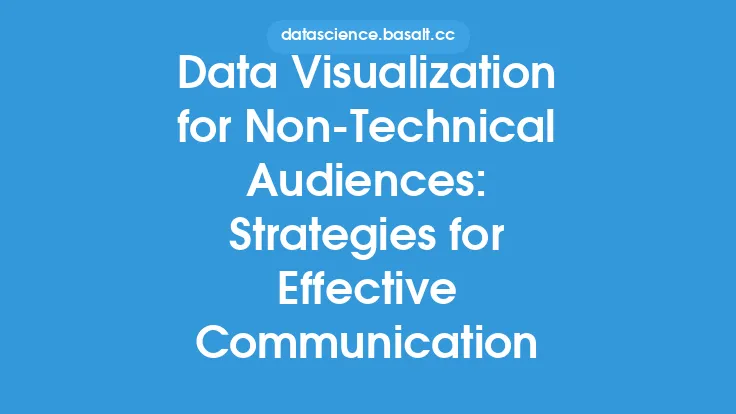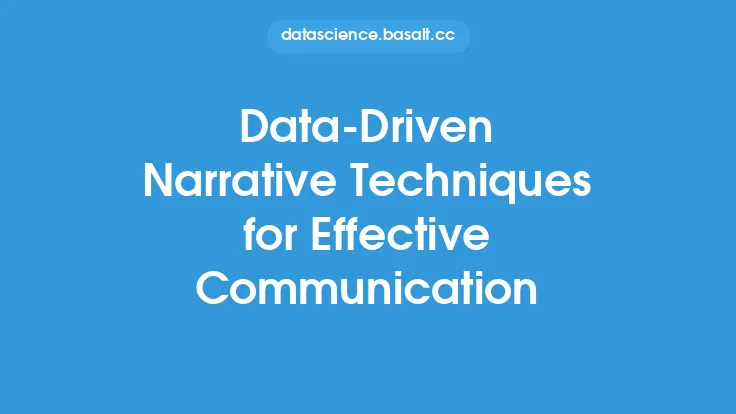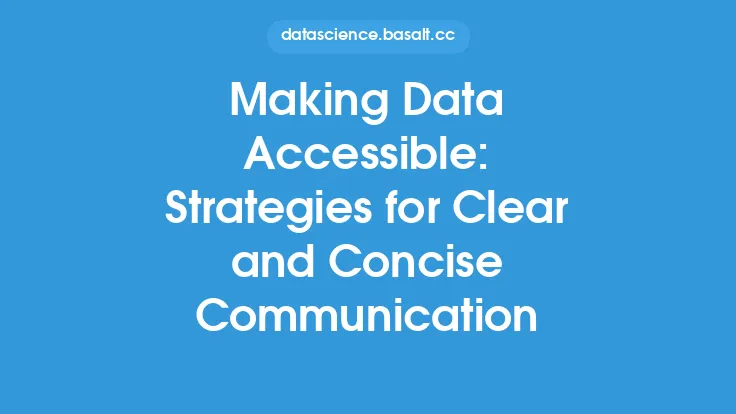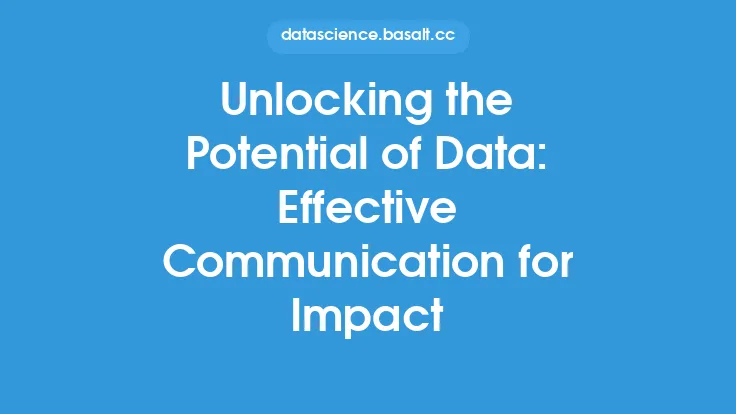Data visualization is a crucial aspect of data storytelling, as it enables the clear and effective communication of complex data insights to both technical and non-technical audiences. The goal of data visualization is to present data in a way that is easy to understand, interpret, and act upon. To achieve this, it is essential to employ effective data visualization techniques that take into account the characteristics of the data, the needs of the audience, and the goals of the communication.
Understanding the Principles of Data Visualization
Effective data visualization is based on a set of fundamental principles that guide the design and creation of visualizations. These principles include clarity, simplicity, accuracy, and relevance. Clarity refers to the ability of the visualization to clearly convey the message or insight, while simplicity refers to the avoidance of unnecessary complexity or clutter. Accuracy is critical, as it ensures that the visualization accurately represents the data and does not mislead the audience. Relevance is also essential, as it ensures that the visualization is tailored to the needs and interests of the audience.
Choosing the Right Visualization Type
There are numerous types of data visualizations, each with its own strengths and weaknesses. The choice of visualization type depends on the nature of the data, the message being communicated, and the audience. Common visualization types include bar charts, line charts, scatter plots, heat maps, and treemaps. Bar charts are useful for comparing categorical data, while line charts are ideal for showing trends over time. Scatter plots are used to visualize relationships between two continuous variables, while heat maps are used to display complex data patterns. Treemaps are used to visualize hierarchical data and to show how different categories contribute to a whole.
Color and Visualization
Color is a critical aspect of data visualization, as it can be used to draw attention, convey meaning, and create visual interest. However, color should be used judiciously, as it can also be distracting or misleading if not used correctly. The key is to use a limited color palette that is consistent throughout the visualization and to avoid using colors that are too similar or too bright. It is also essential to consider color blindness and to use colors that are accessible to all audiences.
Interactivity and Animation
Interactivity and animation can be powerful tools in data visualization, as they enable the audience to engage with the data and to explore different scenarios and perspectives. Interactive visualizations can be used to filter, drill down, or zoom in on specific data points, while animation can be used to show how data changes over time or to illustrate complex data patterns. However, interactivity and animation should be used sparingly, as they can also be distracting or overwhelming if not used correctly.
Best Practices for Visualization Design
To create effective data visualizations, it is essential to follow best practices for visualization design. These include keeping the design simple and intuitive, using clear and concise labels and titles, and avoiding unnecessary clutter or decoration. The visualization should also be well-organized and easy to navigate, with a clear hierarchy of information and a consistent layout. Additionally, the visualization should be accessible on different devices and platforms, including desktops, laptops, tablets, and smartphones.
The Role of Storytelling in Data Visualization
Data visualization is not just about presenting data; it is also about telling a story with the data. The story should be clear, concise, and compelling, and should be tailored to the needs and interests of the audience. The story should also be supported by the data, and should not be misleading or deceptive. To tell a story with data, it is essential to identify the key insights and messages, to create a narrative that is engaging and easy to follow, and to use visualizations that are clear, intuitive, and effective.
Technical Considerations
From a technical perspective, data visualization involves a range of tools and technologies, including data visualization software, programming languages, and data storage systems. Popular data visualization tools include Tableau, Power BI, and D3.js, while programming languages such as Python, R, and JavaScript are commonly used for data visualization. Data storage systems such as relational databases and NoSQL databases are also critical, as they provide the foundation for data visualization by storing and managing the data.
Common Data Visualization Challenges
Despite the importance of data visualization, there are several common challenges that can arise. These include data quality issues, such as missing or inaccurate data, and data complexity issues, such as large or complex data sets. Other challenges include the need to communicate complex data insights to non-technical audiences, the need to create interactive and dynamic visualizations, and the need to ensure that the visualization is accessible and usable on different devices and platforms.
Future Directions
The field of data visualization is constantly evolving, with new tools, technologies, and techniques emerging all the time. Future directions include the use of artificial intelligence and machine learning to create more interactive and dynamic visualizations, the use of virtual and augmented reality to create more immersive and engaging visualizations, and the use of natural language processing to create more intuitive and user-friendly visualizations. Additionally, there is a growing need for data visualization to be more accessible and inclusive, with a focus on creating visualizations that are usable by people with disabilities and that are tailored to the needs of diverse audiences.





